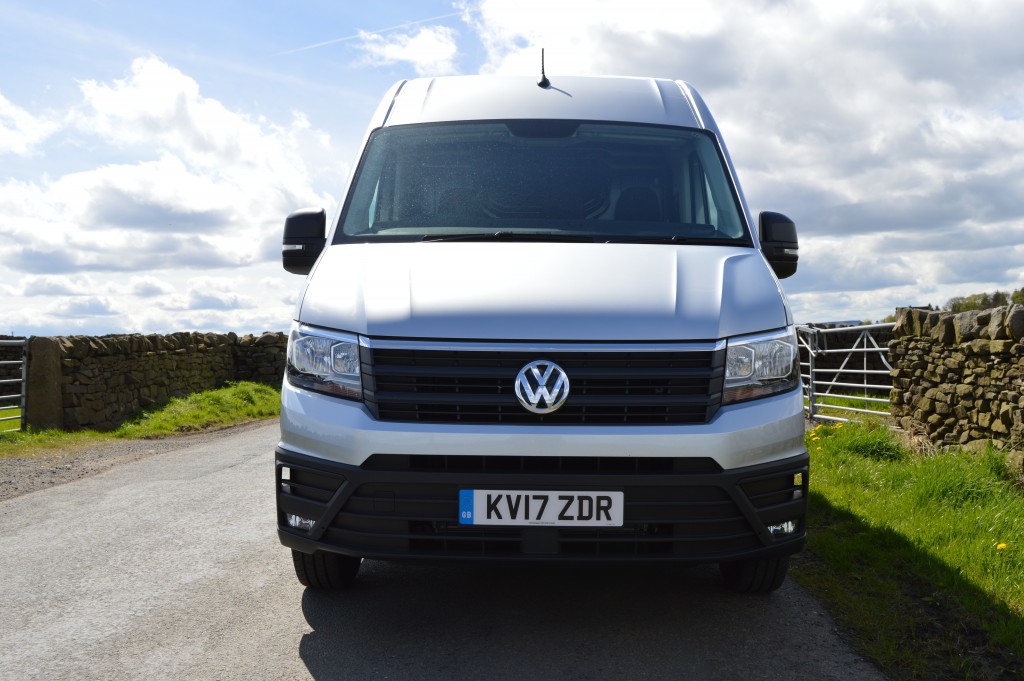Road Test and Review – Volkswagen Crafter CR35 MWB Trendline 140PS
An old name on a very new face…
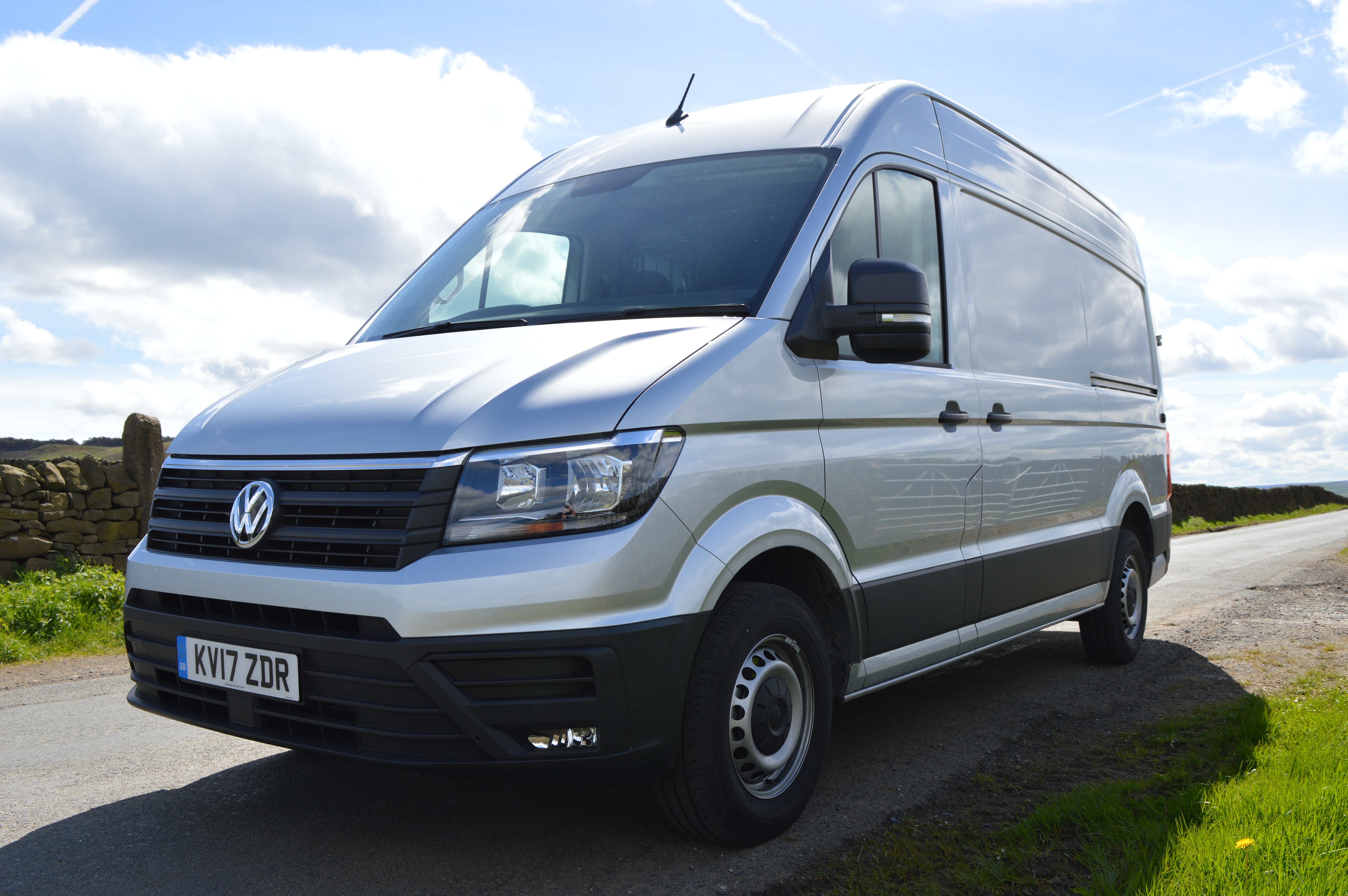
Background
Introduced in 2006, the original Volkswagen Crafter replaced the venerable LT which had been around for over 20 years. The Crafter was, essentially a rebadged Mercedes-Benz Sprinter but somehow didn’t quite achieve the same success here in the UK as its German stablemate. Indeed, from a used vehicle perspective the Crafter became a little unpopular with a reputation for being a little less than robust, and certainly did not replicate the huge success of its sibling, the extremely popular Transporter van.
When it came to planning future strategy, VW made the decision (albeit it has been suggested with a little ‘assistance’ from its partner) to go it alone and announced in 2013 that it was to design and build a new van from scratch, severing their ties with Mercedes-Benz and building a dedicated, €800m factory in Września, Poland. VW made public their intention to give the Transporter a ‘big brother’ and to this end they have clearly succeeded, the frontal perspective in particular being very reminiscent of the T6.
Initially available in just front wheel drive versions (RWD to come to the UK later) the new Crafter is available in three wheelbases, three roof heights and with a choice of 102, 122, 140 and 177PS 2.0 litre engines. Additionally single and double chassis cab variants will be produced. A 6 speed manual gearbox is standard with an 8 speed auto available for the first time. Trim points are the usual Startline, Trendline and Highline levels.
The test van provided was a CR35 MWB in Trendline trim, with the 140PS engine and manual gearbox. In this guise the payload is 1244kgs with a towing capacity of 3000kg (not simultaneously).
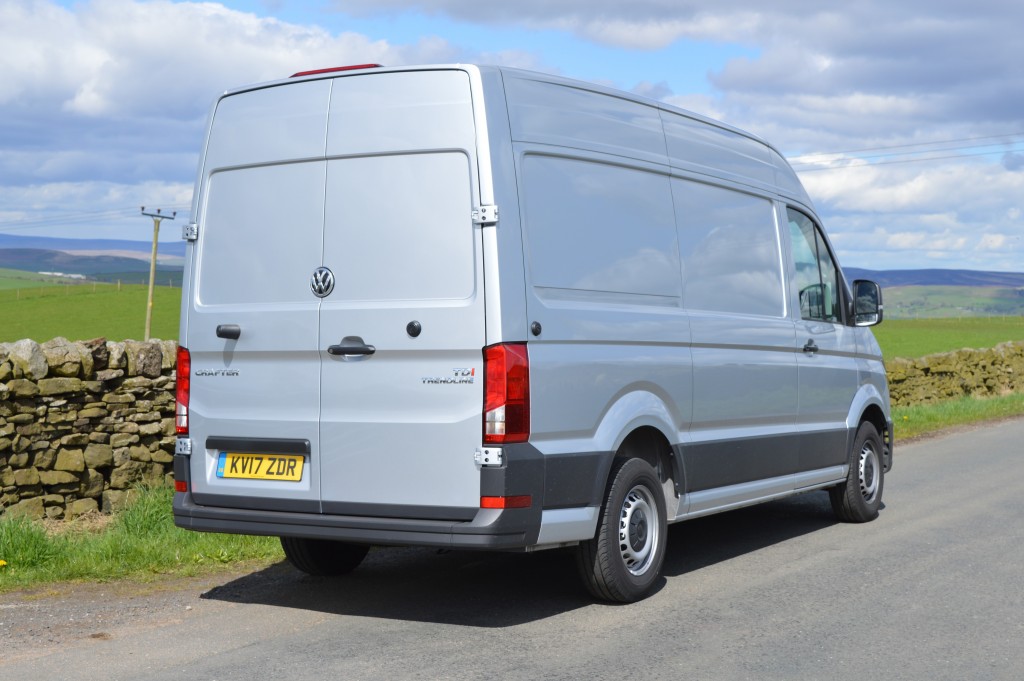
Specification and features
It’s very difficult for designers to come up with a variation on a theme for a 3.5t van, by virtue of being a utilitarian load carrier once the frontal aspect has been designed there is little scope for creativity and a unique end result. There’s no doubt though that the Crafter is as good looking as a large van can be. The Volkswagen Group corporate front end is very evident, not just similar to the Transporter but also the passenger car range.
As with most new van models of recent times, there is an emphasis on safety and security with new Crafter. All models come with crosswind assist, a driver alert system, electronic brake assist, hazard light activation under heavy braking etc. In addition, the Trendline gains a feature called ‘Front Assist’, including city emergency braking system. Although admirable, the specification does fall short of the plethora of safety features that are fitted as standard to the Mercedes-Benz Sprinter in particular, and also the Ford Transit.
The Startline has, as you would expect nowadays as standard a Bluetooth and USB equipped radio, together with a steel bulkhead. The Trendline adds DAB and an 8” touchscreen to the audio facility, a comfort driver’s seat with armrest, cruise control and a multifunction display. A wooden load floor cover is fitted and the rear doors have a 270 degree hinges. Highline trim offers adaptive cruise control, a comfort plus driver’s seat, front and rear parking sensors and a heated windscreen. A notable omission to all the trim levels is air conditioning, and, at an optional cost of £1650 it’s a huge pill for a customer to swallow. This strategy may well lose Volkswagen some potential sales to customers wanting a van with a high level of trim.
The cab environment
With any 3.5t panel van, graceful entry to the cab isn’t something that’s easy to achieve, but, once settled into the driver’s seat getting comfortable is relatively easy with the multitude of adjustments available. The first impression is of a slightly imposing and, it has to be said less than inspiring dashboard. It sits quite high and, unless the seat is raised to its maximum height it obscures the view from the bottom of the windscreen. Despite its utilitarian look however, the dash is functional and well laid out. The touch screen for media and phone (and on the test van the optional satellite navigation) is within easy reach of the driver and the unit itself is simple to use with a logical interface. It also benefits from a ‘swipe’ facility akin to smartphone which works really well in practice. The instrument panel is instantly recognisable to anyone who has driven a recent Volkswagen product, clear and simple, with the trip computer’s display positioned between the two main dials.
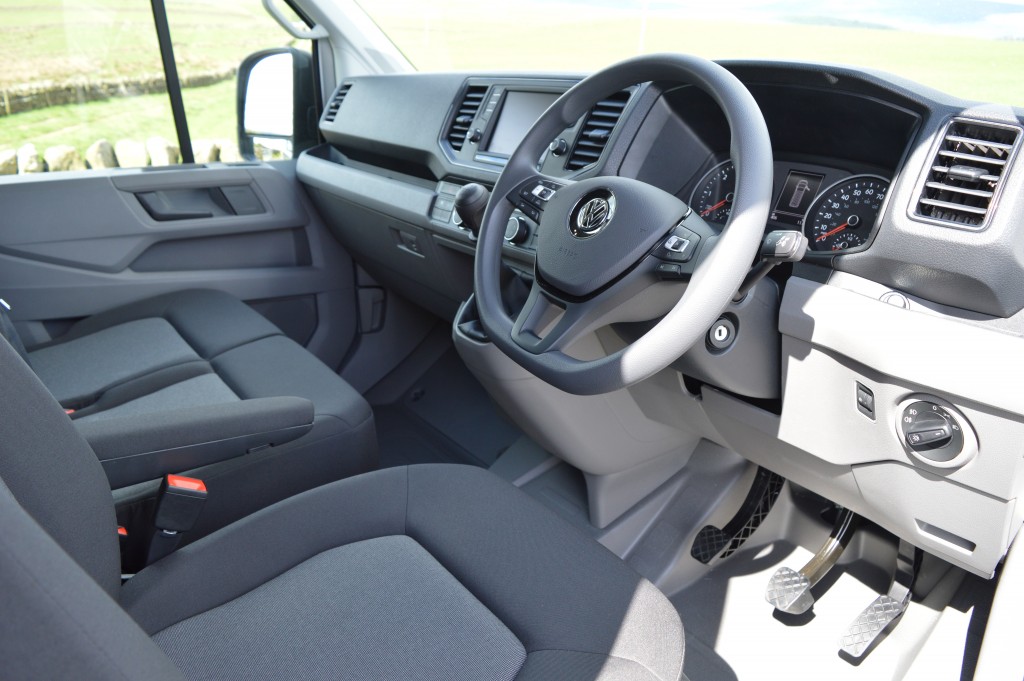
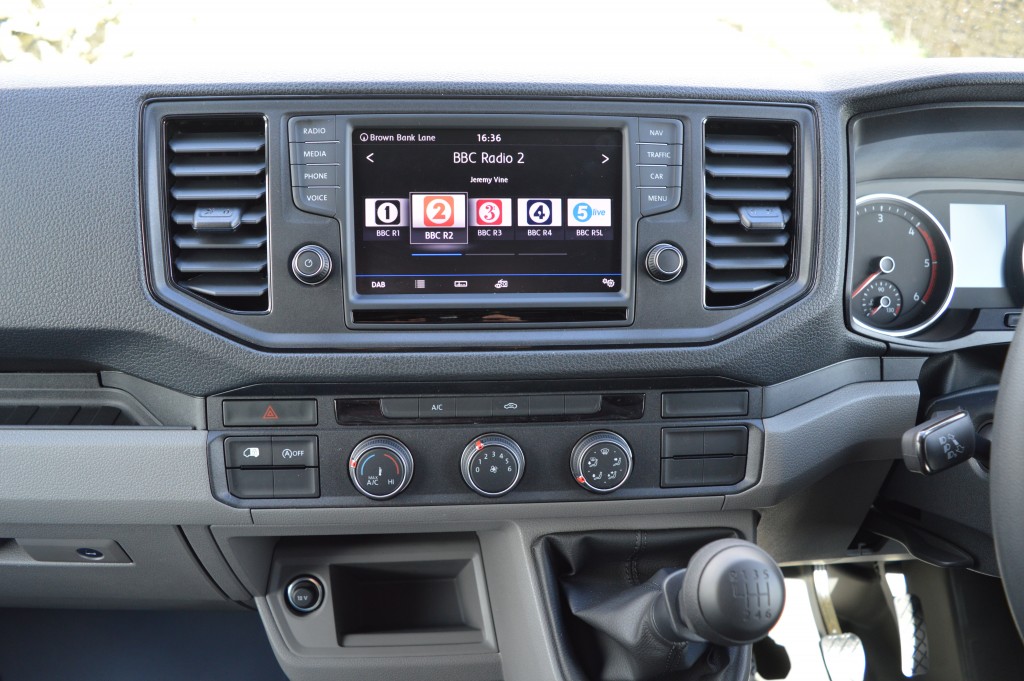
There is a fair amount of storage available within the cab, notably the huge door bins which look almost capable of taking a week’s worth of drinks bottles, newspapers and empty crisp packets. The top of the dash has a number of trays to place items, and a USB port is provided in the tray directly in front of the driver. Above the windscreen there is some shelf space for smaller items.
With the exception of the obscuring dashboard issue, the drivers view is excellent and large door mirrors aid manoeuvring. Cross cab access is good and, in general the cab is roomy.
Loadspace
The loadspace is accessed by a huge side loading door and 270 degree (in the Trendline and above) opening rear doors. The loading height is low and the Trendline also boasts grab handles at the rear door apertures to aid access. The wooden flooring fitted to the Trendline is substantial, and has a slip resistant surface. Load area protection is limited to this and the wheelarches and sides will require further aftermarket attention for the vast majority of users. The steel bulkhead is more or less flat with none of the annoying bulges that can impede loading in some vans. Ten load lashing rings in the floor are supplied, and the load is illuminated by two standard bulbs. These are inadequate for a van of this size and it’s a shame Volkswagen didn’t include some LED units, which really can make all the difference to an operator loading and unloading in poor light.
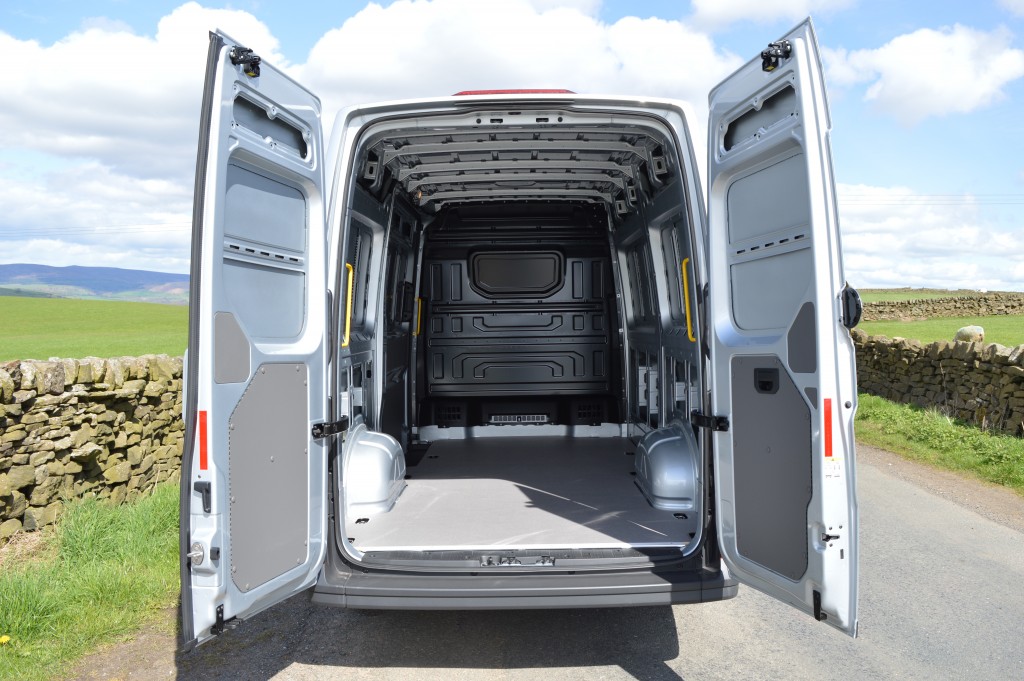
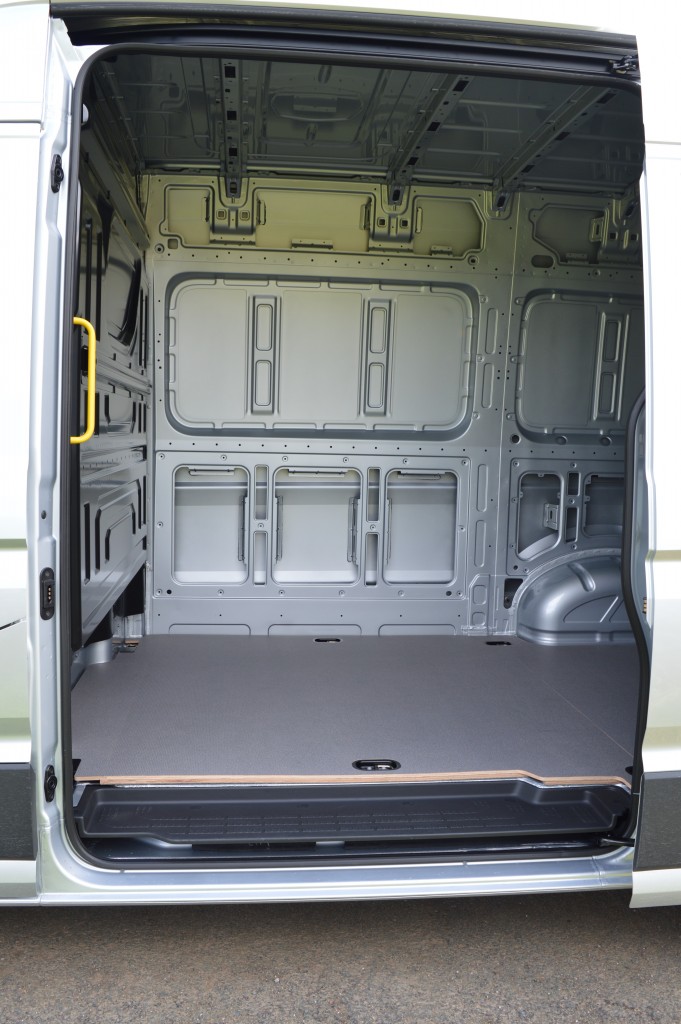
On the road
The 140PS engine in the test vehicle performed more than adequately on both urban and motorway routes, although we did not have the opportunity to drive the van with a load. This engine output is now rapidly becoming the norm and Volkswagen expect this unit to be the most popular option in the UK market. Euro 6 engines are generally characterised by being quieter than their predecessors and the Crafter’s power unit is no exception. Noise intrusion generally was very low, both road and wind noise have been minimised and are not particularly noticeable. The six speed gearbox was a delight, the lever being perfectly placed and the change smooth and slick.
We were disappointed that there was a significant rattling evident from the bulkhead area in a brand new van that had never carried a load and this did raise a small question mark around build quality. In addition despite the crosswind assist facility a motorway drive on a gusty day did throw some doubt as to how effective the system is, the van certainly feeling the effect of the wind from time to time.
From a manoeuvrability perspective the Crafter belied its size, but, as with any large van reversing sensors or a camera are really essential to avoid unnecessary damage to the vehicle or other objects.
Fuel consumption, although not excessive is not class leading for a high roof van, we achieved an unladen 31 mpg on a long, and sometimes stop start motorway run, and a more gentle drive resulted in a figure of 34 mpg.
Conclusion
Volkswagen have done a great job with the new Crafter, it’s a good looking load carrier with an efficient, quiet and reasonably economical engine. The break from Mercedes-Benz can only be a good thing but, to dispel the slightly negative sentiment surrounding the old model, we think that Volkswagen may have missed a trick by not giving the van a fresh, new name. It truly is an ‘all new’ van (a phrase often over used by manufacturers) and certainly justifies a complete new identity.
Our main criticisms? A bland dash which can impede visibility and we also question the equipment levels, in particular the lack of air conditioning. Overall though, a truly fine van and, marketed correctly should give the competition a cause for concern.
Price as tested £33656 OTR plus VAT.
(The test van included the following optional equipment: Overhead storage compartment, climatic air conditioning, Discover Media navigation system, front fog lights and metallic paint).
